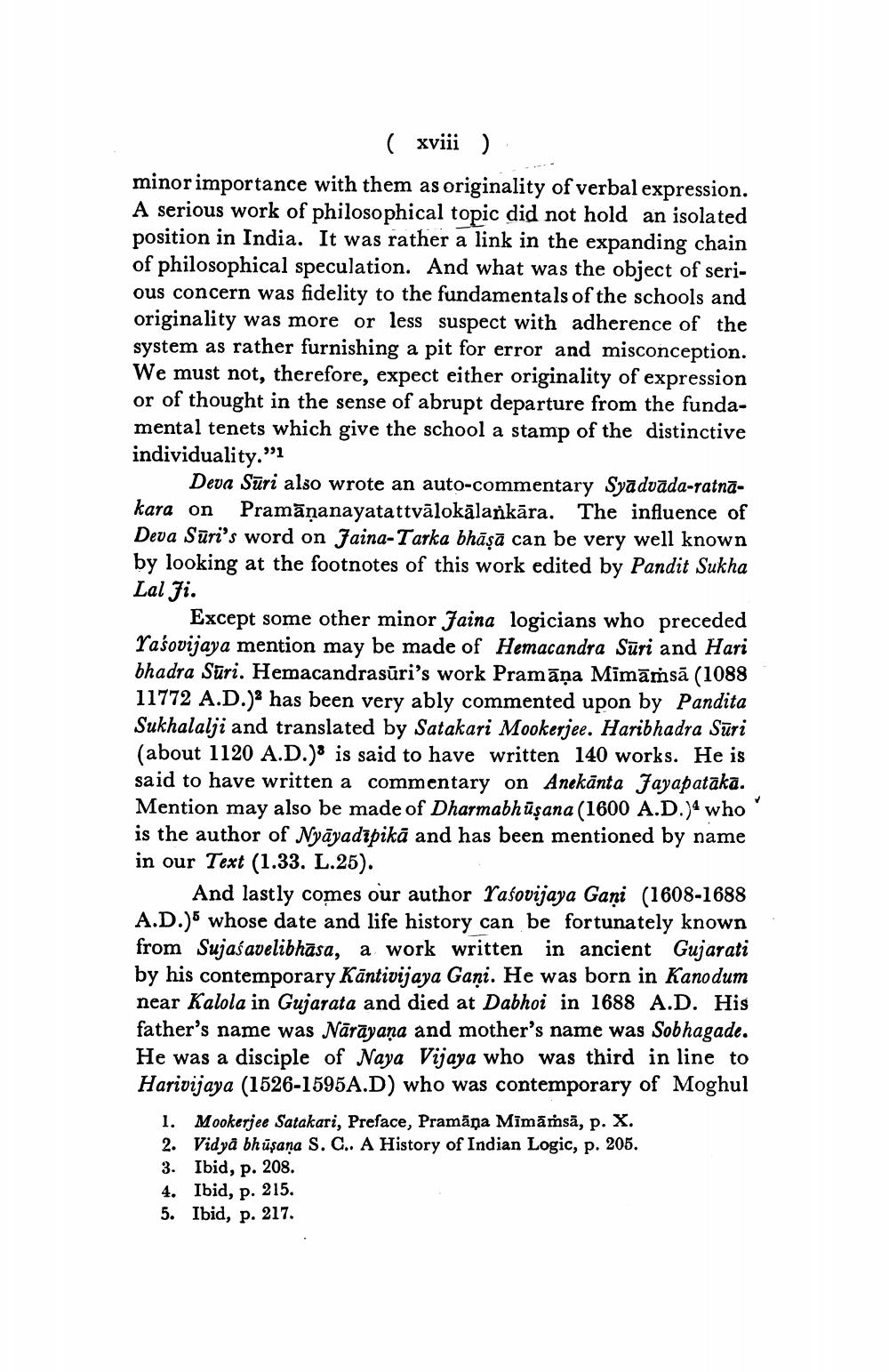________________
( xviii) minor importance with them as originality of verbal expression. A serious work of philosophical topic did not hold an isolated position in India. It was rather a link in the expanding chain of philosophical speculation. And what was the object of serious concern was fidelity to the fundamentals of the schools and originality was more or less suspect with adherence of the system as rather furnishing a pit for error and misconception. We must not, therefore, expect either originality of expression or of thought in the sense of abrupt departure from the fundamental tenets which give the school a stamp of the distinctive individuality.”
Deva Sūri also wrote an auto-commentary Syadvāda-ratnakara on Pramānanayatattvālokālankāra. The influence of Deva Sūri's word on Jaina-Tarka bhāsā can be very well known by looking at the footnotes of this work edited by Pandit Sukha Lal Ji.
Except some other minor Jaina logicians who preceded Tasovijaya mention may be made of Hemacandra Suri and Hari bhadra Sūri. Hemacandrasūri's work Pramāņa Mīmāṁsā (1088 11772 A.D.) has been very ably commented upon by Pandita Sukhalalji and translated by Satakari Mookerjee. Haribhadra Sūri (about 1120 A.D.)' is said to have written 140 works. He is said to have written a commentary on Anekānta Jayapatāka. Mention may also be made of Dharmabhūşana (1600 A.D.)4 who is the author of Nyāyadipikā and has been mentioned by name in our Text (1.33. L.25).
And lastly comes our author Tasovijaya Gani (1608-1688 A.D.)5 whose date and life history can be fortunately known from Sujaśavelibhāsa, a work written in ancient Gujarati by his contemporary Kāntivijaya Gari. He was born in Kanodum near Kalola in Gujarata and died at Dabhoi in 1688 A.D. His father's name was Nārāyana and mother's name was Sobhagade. He was a disciple of Naya Vijaya who was third in line to Harivijaya (1526-1595A.D) who was contemporary of Moghul
1. Mookerjee Satakari, Preface, Pramāņa Mīmāṁsā, p. X. 2. Vidya bh ūşana S. C.. A History of Indian Logic, p. 205. 3. Ibid, p. 208. 4. Ibid, p. 215. 5. Ibid, p. 217.




